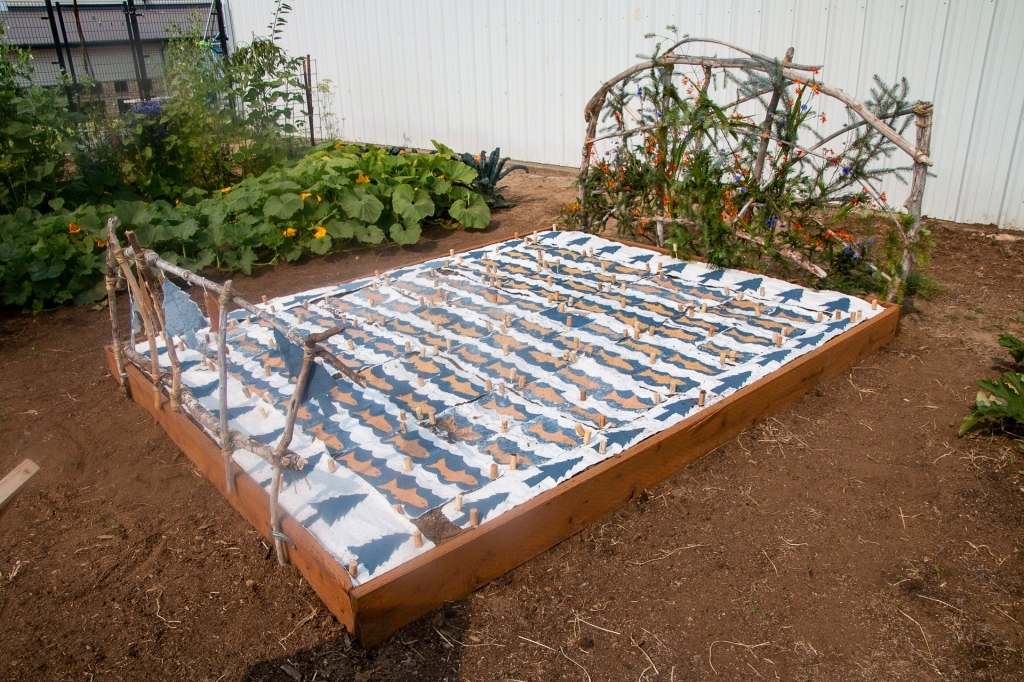 Timothy S. Allen
Timothy S. Allen
The descendant of Alabama farmers and handcrafters, artist Jane Ingram Allen has worked in fiber arts, sculpture, and other media. In the 1990s, she became concerned that her pieces did not benefit the environment and began thinking about creating more sustainable art.
Today, in addition to making handmade paper artworks, Allen collaborates with students and communities to make paper quilts impregnated with wildflower seeds. Completed quilts are laid on beds of earth, where they bloom and grow in harmony with local ecosystems.
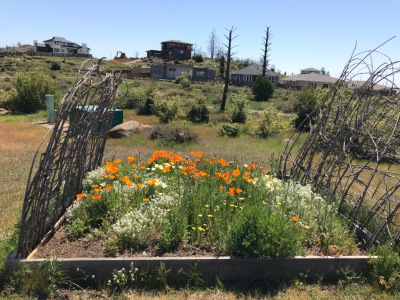 Living Quilt for Santa Rosa, 2018. Timothy S. Allen
Living Quilt for Santa Rosa, 2018. Timothy S. Allen
Allen made her first paper quilt as an artist in residence at the Sitka Center for Art and Ecology in Otis, Oregon, in 2014 and 2015. She was inspired by the quilt patterns painted on local barns, as well as by her own experience growing up around quilters. Allen’s “living quilts” are made from natural materials that eventually break down and become compost for embedded wildflower seeds. For her, the quilts “show that art can be literally a living entity . . . I also see them as giving the earth a beautiful covering that can produce new life and blooming flowers.”
To make both her quilts and her smaller-scale paper sculptures, Allen must first generate paper pulp. For her sculptures, she often makes the pulp herself from local materials—she has done this in the past with Sitka spruce bark, Sitka sedge leaves, and cattail leaves. This approach requires her to cook collected plant waste and then pound it by hand with a wooden mallet in small batches. Because her living quilts are large—as big as 8 by 10 feet—she often buys premade plant fiber pulp to start the process.
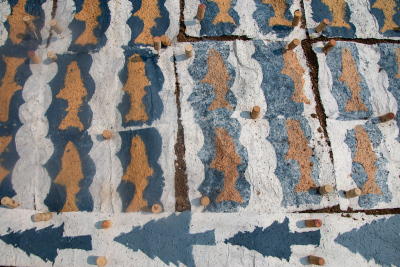 Making Living Quilt for Nestucca Valley, August 2021. Timothy S. Allen
Making Living Quilt for Nestucca Valley, August 2021. Timothy S. Allen
The living quilts vary in theme and design; some employ traditional patterns, others unique imagery. For example, Allen’s Living Quilt for Sojourner Truth (2020), installed in Sacramento, California, honors the abolitionist by utilizing a quilt pattern, called North Star, associated with the Underground Railroad, while her newest quilt, Living Quilt for Nestucca Valley (2021) employs Allen’s own design of waves and fish.
For the latter, Allen, working through the Sitka Center, teamed up with students in the first through ninth grades from the nearby Nestucca Valley School District this past August to produce a quilt for the school grounds. To prepare, she tore up sheets of plant fiber pulp, soaked it in water overnight, and then pureed the material in a kitchen blender. The resulting wet pulp was transferred into vats and stirred with formation aid powder, which slows water drainage. Allen made three colors of pulp: white, made from Musa textilis, a type of banana plant; orange, made by dyeing white pulp with a nontoxic pigment; and indigo blue, colored with recycled blue jeans.
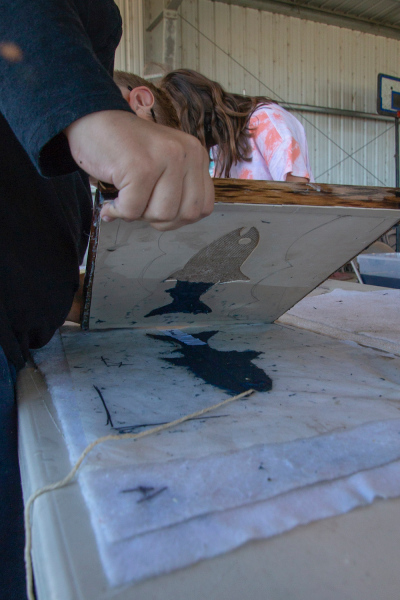 Making Living Quilt for Nestucca Valley, August 2021, August 2021. Timothy S. Allen
Making Living Quilt for Nestucca Valley, August 2021, August 2021. Timothy S. Allen
The three colors of pulp were used to create fish, wave, and tree imagery for the quilt. Allen said these icons represent three “major ecological concerns in this part of Oregon: forest conservation, salmon conservation, and water and ocean conservation.” Seeds for blue, white, and orange regional wildflowers were added to the corresponding pulp vats.
Allen showed the students how to create sheets of paper for the quilt using moulds (frames with screens that strain water off the pulp) and deckles (empty frames placed on the moulds that hold the pulp in a desired shape). To make the basic quilt blocks, mould and deckle were dipped into the white pulp vat to create sheets of plain white paper. While still wet, the sheets were transferred onto a nonwoven interfacing fabric to solidify.
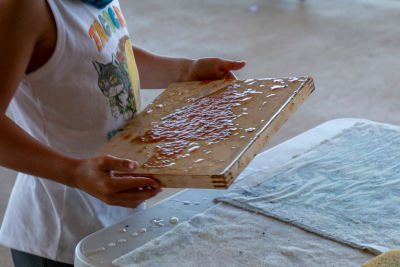 Making Living Quilt for Nestucca Valley, August 2021. Timothy S. Allen
Making Living Quilt for Nestucca Valley, August 2021. Timothy S. Allen
To produce the fish, wave, and tree designs, Allen prepared stencils for each shape and attached them to separate moulds. First a mould with the wave stencil was dipped in the blue vat, producing blue pulp waves that were laid on top of a solidifying white sheet. Then the mould with the fish stencil was dipped in the orange vat, creating orange pulp fish that were laid on top of the wet blue waves. As each layer was added, the students used sponges to absorb excess moisture and press the layers together.
The young paper-makers crafted 24 marine-themed quilt blocks as well as border squares emblazoned with trees and stand-alone paper trees and fish. They then arranged the blocks into a quilt pattern on the surface of a raised garden bed built by local volunteers. In time, dwarf sulphur cosmos, calendula, California bluebells, cornflower, baby’s breath, white cosmos, and other flowers will bloom as the quilt decays and evolves.
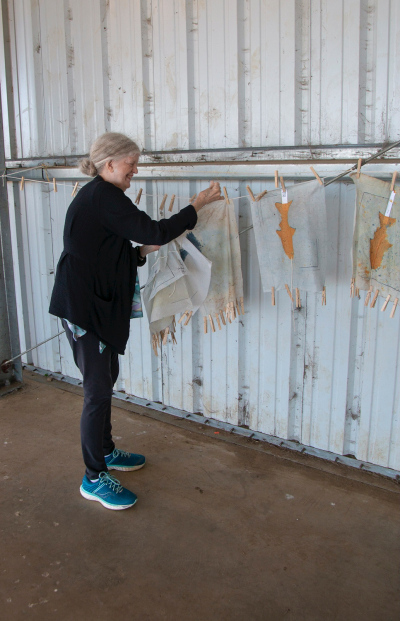 Making Living Quilt for Nestucca Valley, August 2021, August 2021. Timothy S. Allen
Making Living Quilt for Nestucca Valley, August 2021, August 2021. Timothy S. Allen
Allen does not often get to see her quilts evolve in person. But she says that a living quilt she made in Newnan, Georgia, bloomed well for three years, and then the bed was used by the children there to grow vegetables. And a quilt created in 2018 in her current hometown of Santa Rosa, California, continues to live and bloom.
The intensifying effects of climate change, Allen says, have lent a greater urgency to her work lately. Wildfires have forced her to evacuate her California home three times. “I respond to these stresses by doing art,” she says. “There is something very soothing about the sounds of papermaking, with the splashing and dripping of water, and the making of something from nothing, and doing a small part to provide some beauty and improve the environment.”
Source link : https://www.artnews.com/art-news/artists/jane-ingram-allen-living-quilts-1234603170












